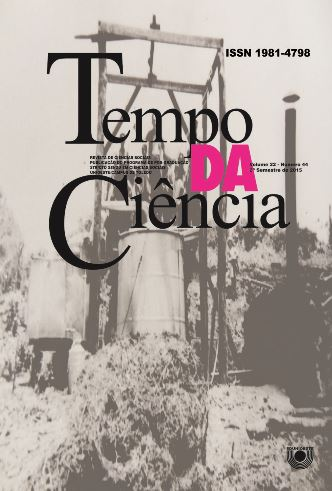FRONTERAS PERMEABLES DURANTE LA DÉCADA DEL 70: EL PLAN CÓNDOR
DOI:
https://doi.org/10.48075/rtc.v22i44.12937Palavras-chave:
Plan Cóndor, Fronteras, Permeabilidad, DictaduraResumo
La temática que se intentará explicar o, más bien, poner en discusión será la permeabilidad de las fronteras en el Cono Sur durante la existencia del llamado Plan Cóndor y cómo ello generó inmigraciones y movilidad de ciudadanos entre los países miembros. El Coronel Manuel Contreras, comandante de la Dirección de Inteligencia Nacional de Chile (DINA) en 1975, propone a los Comandantes de Paraguay, Brasil, Bolivia, Uruguay y Argentina, la creación de un órgano de coordinación de inteligencia contra la subversión comunista internacional (Blinex, 2007. Rey Tristan (Dir.)). El plan significaba la contribución de unos servicios de inteligencia a otros para actuar en el territorio de otro país libremente, utilizando métodos de persecución y represión e incluso de desaparición de quienes ellos consideraban enemigos (Memoria abierta, 2007). Este accionar de las FFAA (Fuerzas Armadas) movilizó a militantes y a personas con ideas contrarias a las neoliberales de los entonces gobiernos militares a emigrar de un país a otro, de forma ilegal, ya que las fronteras se encontraban controladas. De esta manera se generó un desplazamiento tanto legal (ya que las FFAA representan una porción del Estado Nacional), como legítimo, ilegitimizado por las fuerzas armadas para algunos ciudadanos, dejando fronteras debilitadas.Downloads
Publicado
Como Citar
Edição
Seção
Licença
Aviso de Direito Autoral Creative Commons
Política para Periódicos de Acesso Livre
Autores que publicam nesta revista concordam com os seguintes termos:
1. Autores mantém os direitos autorais e concedem à revista o direito de primeira publicação, com o trabalho simultaneamente licenciado sob a Licença Creative Commons Attribution que permite o compartilhamento do trabalho com reconhecimento da autoria e publicação inicial nesta revista.
2. Autores têm autorização para assumir contratos adicionais separadamente, para distribuição não-exclusiva da versão do trabalho publicada nesta revista (ex.: publicar em repositório institucional ou como capítulo de livro), com reconhecimento de autoria e publicação inicial nesta revista.
3. Autores têm permissão e são estimulados a publicar e distribuir seu trabalho online (ex.: em repositórios institucionais ou na sua página pessoal) a qualquer ponto antes ou durante o processo editorial, já que isso pode gerar alterações produtivas, bem como aumentar o impacto e a citação do trabalho publicado (Veja O Efeito do Acesso Livre).
Licença Creative Commons
Esta obra está licenciada com uma Licença Creative Commons Atribuição-NãoComercial-CompartilhaIgual 4.0 Internacional, o que permite compartilhar, copiar, distribuir, exibir, reproduzir, a totalidade ou partes desde que não tenha objetivo comercial e sejam citados os autores e a fonte.


